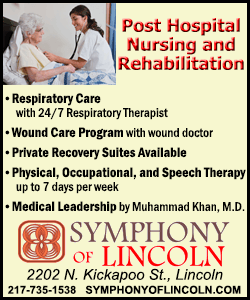|
 The researchers say the technology demonstrates a potential use for
robots to help people extend their range of abilities and do more
than one task at a time. The researchers say the technology demonstrates a potential use for
robots to help people extend their range of abilities and do more
than one task at a time.
At the college's Brain and Behavior Lab, engineers have taken a
robotic arm and devised a system for it to be used as an extension
of the human body. Instead of following a set of computer commands,
the robot arm is guided by a tracker that follows the direction of
the eyes, with an algorithm translating the path of the user's gaze
into commands that control the robotic arm.
On Wednesday (October 14), in what the team says was quite possibly
a world first, a researcher used the technology to paint a picture
while simultaneously eating a croissant and drinking coffee. Post
graduate student Sabine Dziemian said the intuitive computer program
meant that even when her hands were otherwise occupied she could
still accurately control the robotic arm.

"In general it's very intuitive because I don't have to think about
commands or something like this. I simply think about where I want
to draw or which color I want to take. And by thinking, a person
usually looks at that color. So I also then look at that color and
the robot goes there because it detects my eye movements and where
I'm looking, and it has the co-ordinates exactly so it goes there
directly. So I don't have to think a lot about this when I'm
controlling it," said Dziemian.
The resulting painting is, admittedly, rudimentary. But the exercise
demonstrates how the technology could be implemented into everyday
life to literally give users an extra pair of hands.
Led by Dr. Aldo Faisal from the Departments of Computing and
Bioengineering, the researchers developed sophisticated computer
software to decode the eye movements of the user into actions.
"Six years ago we started to look at eye movements. It's a very
natural, intuitive means by which we can operate devices. And so
over the course of the years we developed systems that decode our
intention of action from our eye movements. So you can imagine, for
example, when you want to grab a cup; you will look at that cup
before you grab it. And you will look in a specific way so you can
judge where it is and how wide you have to shape your grip. And so
we're developing algorithms that decode this intention from eye
movement and we're then translating them into action," Faisal told
Reuters.
The technology could have a massive impact on the lives of people
suffering from debilitating conditions like multiple sclerosis,
Amyotrophic Lateral Sclerosis, or Parkinson's Disease. Faisal said
the next step is to 'augment' the body so that everyone can
multi-task with the aid of eye-controlled robotics.
[to top of second column] |

"Now we're not just talking about restorations of the body, but
really about augmentation of the body. So, we are developing
technology that is not only helpful in restoring the ability of
people to move, but really technology that can give even able-bodied
people an extra pair of hands; and extra pair of arms," he said
"Imagine, for example, that you can paint and eat and drink at the
same time, imagine holding a baby and preparing its food while you
do it all simultaneously. So there are whole new ways we can think
about interacting with the world."
For Dziemian, who took part in much of the research, the software
translates her eye movements into actions with very little effort -
even while she was eating and drinking.
"I think the level of concentration is not very high because it's
something very intuitive. I didn't need a lot of time to learn how
to use it. Actually, using it one time was enough to know how to
control it completely," she said.
Faisal said that their program is non-invasive, compared to other
areas of research that are focused on implanting technology directly
into people's brains. He said the "very invasive, very expensive,
(and) very risky operations that people have to undergo" would be
unnecessary with their system.
"We are following a non-invasive approach where you don't have to
put technology into the head, but you can just, you know, you can
just take it on and off like a pair of glasses. That's the level of
technology that we want to offer to people because we think it's
much more acceptable, it's lower risk and, if we can operate
technology with the same level of intuition, we think it will have a
better sense, better opportunities for success."

The researchers are now looking for partners to commercialize the
technology, while working on making the software even more intuitive
so that it becomes a seamless interface between man and machine.
[© 2015 Thomson Reuters. All rights
reserved.] Copyright 2015 Reuters. All rights reserved. This material may not be published,
broadcast, rewritten or redistributed. |